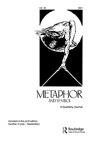英语和西班牙语中时长与量的关系:语料库研究
IF 3.3
3区 文学
0 LANGUAGE & LINGUISTICS
引用次数: 3
摘要
先前的心理语言学研究表明,英语和西班牙语通过不同的隐喻来表达时间持续时间。英语倾向于用时间作为长度隐喻(例如,我已经等了很长时间),而西班牙语更喜欢用时间作为数量隐喻(例如:他说“我等了很多时间”)。然而,这些结果将两种不同的构念混为一谈:时间持续时间构念,可以使用长度或数量隐喻(例如,长时间,没有持续太多时间),以及时间即资源构念,主要使用数量隐喻(如,你花了太多的时间)。本研究通过语料库语言学数据证实,英语在表达时长时倾向于时间作为长度隐喻,而在表达时间作为资源的构念时倾向于使用时间作为数量隐喻。另一方面,西班牙语在持续时间和资源解释中都使用了时间作为数量隐喻。此外,英语中时间作为资源表达的频率较高,而西班牙语中持续时间隐喻的频率较高。这种差异可能是因为英语被归类为一种单时文化,将时间概念化为一个有价值的对象,而西班牙语是一种多时文化,以更抽象和灵活的方式对时间进行分类。本文章由计算机程序翻译,如有差异,请以英文原文为准。
Duration as Length Vs Amount in English and Spanish: A Corpus Study
ABSTRACT Previous psycholinguistic studies have suggested that English and Spanish express temporal duration through different metaphors. English tends to use the time-as-length metaphor (e.g. I have been waiting for a long time), while Spanish prefers the time-as-quantity metaphor (e.g. he esperado mucho tiempo; ‘I have waited much time’). However, these results conflated two different construals: the temporal duration construal, which can use length or quantity metaphors, (e.g. long time, that didn’t last much time) and the time-as-a-resource construal, which mostly employs quantity metaphors (e.g. you spent too much time). This study confirms through corpus linguistic data that English favors the time-as-length metaphor when expressing temporal duration, while it favors the time-as-quantity metaphor when expressing the time-as-a-resource construal. On the other hand, Spanish employs the time-as-quantity metaphor both in the duration and the resource construal. In addition, English shows a higher frequency of time-as-resource expressions, while Spanish shows a higher frequency of duration metaphors. This difference might be explained by the fact that English has been classified as a monochronic culture, conceptualizing time as a valuable object, while Spanish is a polychronic culture, categorizing time in a more abstract and flexible way.
求助全文
通过发布文献求助,成功后即可免费获取论文全文。
去求助
来源期刊

Metaphor and Symbol
Multiple-
CiteScore
2.90
自引率
0.00%
发文量
23
期刊介绍:
Metaphor and Symbol: A Quarterly Journal is an innovative, multidisciplinary journal dedicated to the study of metaphor and other figurative devices in language (e.g., metonymy, irony) and other expressive forms (e.g., gesture and bodily actions, artworks, music, multimodal media). The journal is interested in original, empirical, and theoretical research that incorporates psychological experimental studies, linguistic and corpus linguistic studies, cross-cultural/linguistic comparisons, computational modeling, philosophical analyzes, and literary/artistic interpretations. A common theme connecting published work in the journal is the examination of the interface of figurative language and expression with cognitive, bodily, and cultural experience; hence, the journal''s international editorial board is composed of scholars and experts in the fields of psychology, linguistics, philosophy, computer science, literature, and media studies.
 求助内容:
求助内容: 应助结果提醒方式:
应助结果提醒方式:


